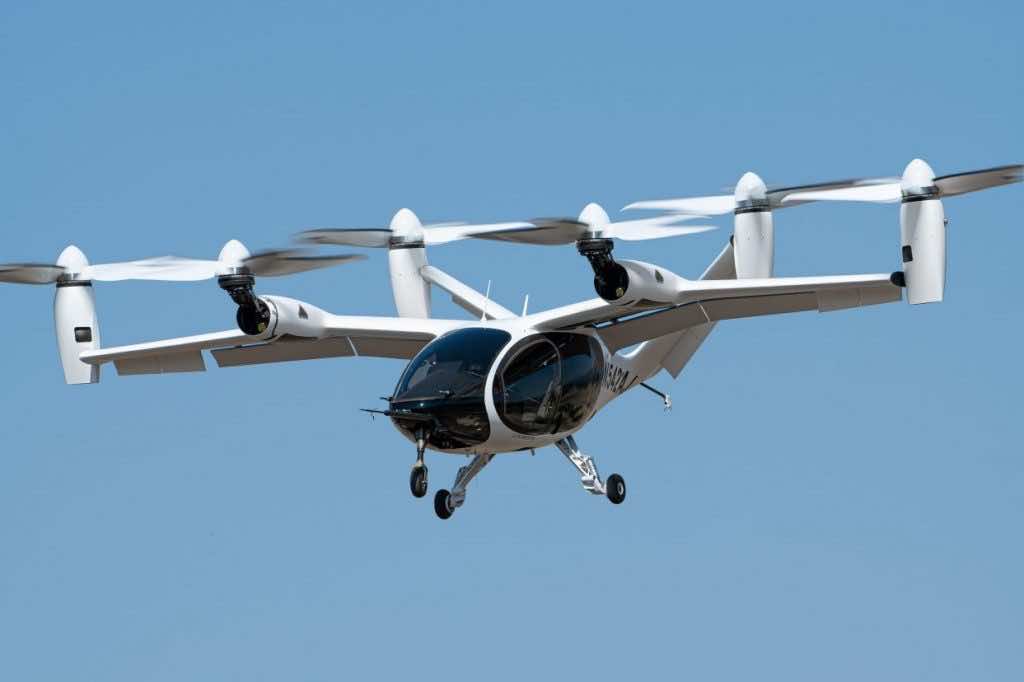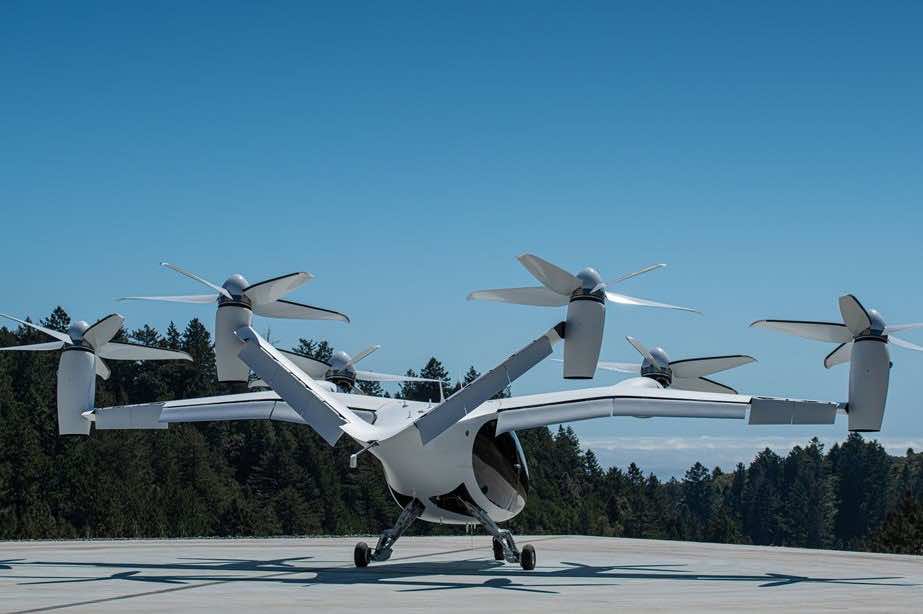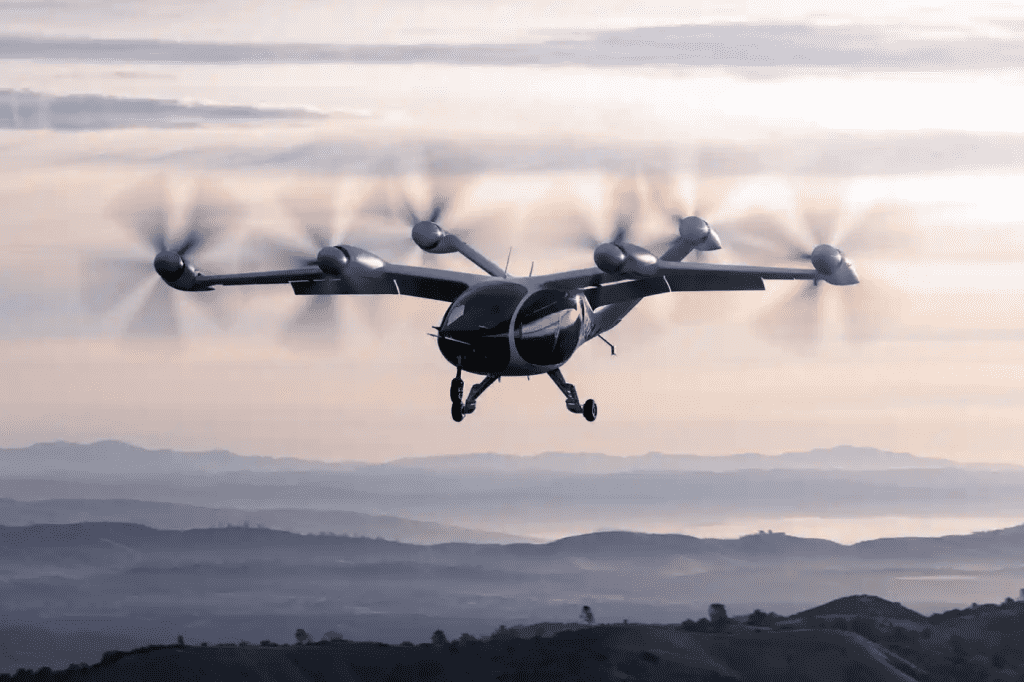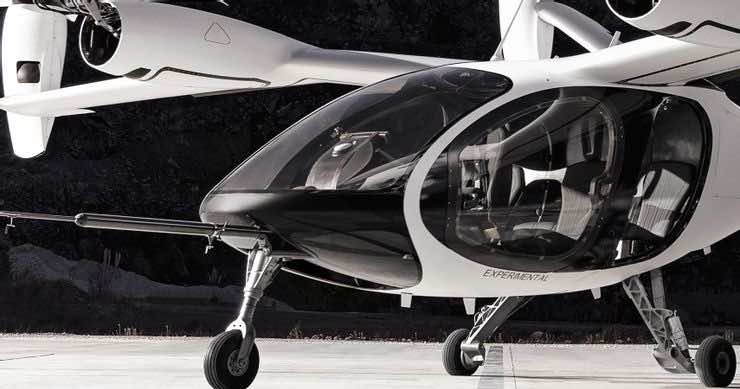Joby Aviation has stayed in semi-stealth mode for a long period that these recent pair of videos released come as a real surprise. It is our maiden look at the world’s first-ever advanced eVTOL air taxi taking off for a horizontal flight and cruising the air to demonstrate safe landing finally.
Joby unveiled the videos due to an investor’s push as it equips up to go public on the New York Stock Exchange with a Special Purpose Acquisition company called ‘Reinvent Technology Partners.’

The Californian tech company has been working on this project for a far longer duration than its competitors. Their five-seat, 322-km/h VTOL has already proven grounds in more than a thousand test flights. The new Joby aircraft uses six large tilting rotors to achieve vertical lift and horizontal winged cruise, making it one of the most well-thought-designed aircraft to exist.
The company’s manufacturing resources are in abundance, thanks to a mega-deal with Toyota. The firm owns Uber Elevate and has the future potential to design a multi-mode travel service that has millions of signed-up users already.

It is the most well-funded company in the eVTOL category. However, its success matters a lot on the cost of the service. Quiet eVTOL taxi services will be the next big thing, and Joby already appears to be well-positioned to lead this market with a huge starting-off advantage to their name.
The first video has Joby founder JoeBen Bevirt take through its plan in a short animated fashion with the aircraft alongside. The next thing that showed us think that this technology-filled air-taxi is different from the helicopters’ engineering. Why say that? Because as shown, these air taxis take off vertically and fly several feet off the ground without making any noise. Helicopters that appear to function using the same mechanism make tons of noise, whereas while explaining the new Joby air-taxi, Bevirt didn’t even bother to raise his voice even after it takes off.
The new eVTOL air taxi makes unexpectedly less noise, thanks to its electric powertrains. The most noise these will make would be during its takeoff, whereas the cruising mode is noted to have almost no sound.
The significantly reduced noise gives them a considerable edge. Hence they are believed to become the future of urban travel. The next notable advantage is its cost. The simplicity of the electric powertrains asks for far fewer maintenance costs and the source of energy being electric instead of a fuel-powered engine, making it good to go if compared with conventional air-travel technologies.

These things are simple to operate, hence cutting down the costs of pilot training programs at large. Other than its simple operation, these could operate unmanned as well. Making it a far cheaper solution if we combine all these factors. Its potential for cheap travel solutions has mass-market analysts marking it as a trillion-dollar opportunity in the sector.
The second video demonstrates the tilt-rotor system in action. It covers the takeoff, transition, mid-air flying, and landing flight steps. The video has music in the background, which would have allowed us to understand better how little noise this aircraft makes in its operation if it wasn’t there.

It’s nearing the time for the rubber to hit the mark in the eVTOL section, if you’ll pardon an extremely poor analogy. Money is flowing in from all over different places. Countless companies manage to develop aircraft designs, get them prototyped and get stuck into the hardships of approving them for commercial viability. However, it is not far from reality that we’ll see these silent aircraft functioning to provide a swift and cheap air travel solution.


